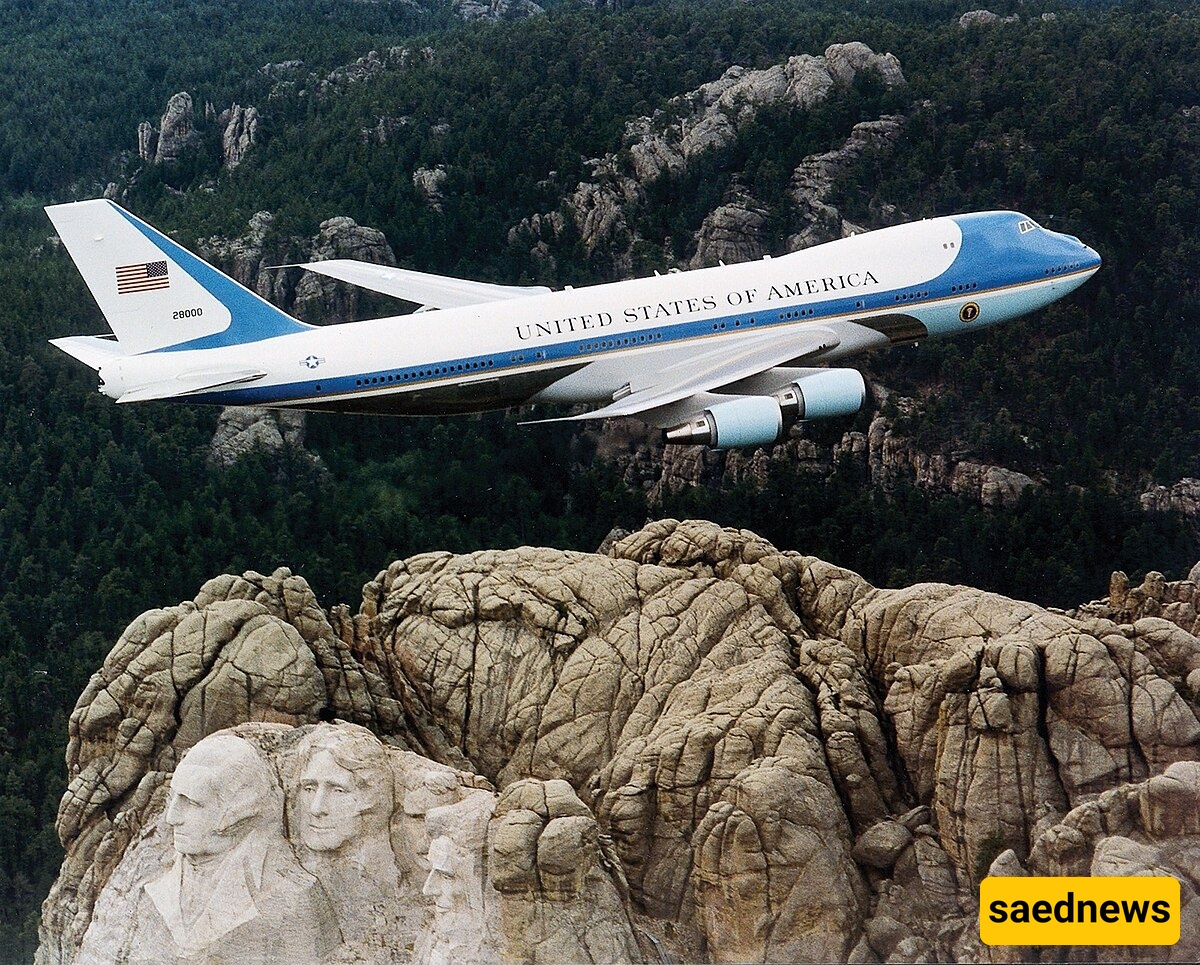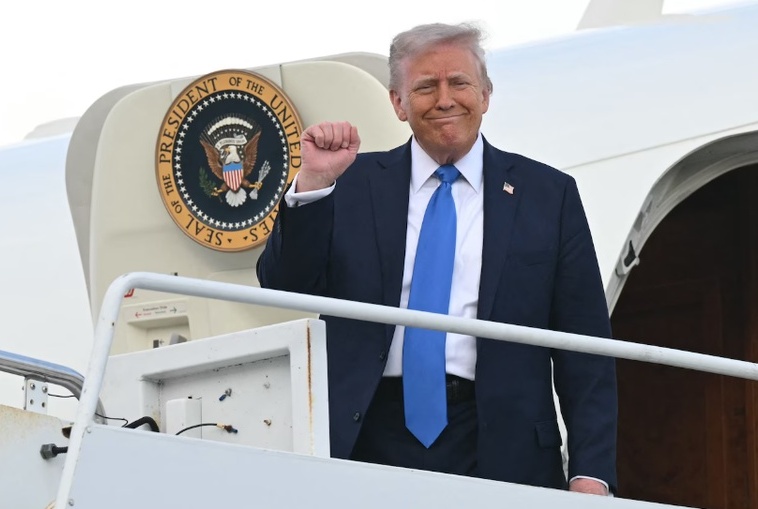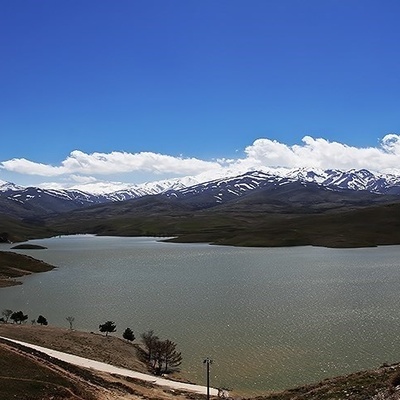SAEDNEWS: Could a luxury Qatari jet be ready to serve as Air Force One in less than six months? That’s the bold claim from Donald Trump — but many experts remain deeply skeptical.

According to Saed News, citing CNN, former U.S. president and presidential candidate Donald Trump has stirred controversy with his latest claim: that a luxury jet gifted by Qatar could be ready within six months to serve as the presidential aircraft, Air Force One. This statement comes as experts in aviation, national security, and logistics describe such a timeline as not only unrealistic but also dangerous and even impossible.
The aircraft in question is a Boeing 747 with lavish interiors and exceptional amenities, valued at around $400 million and provided to the United States by the Qatari government. Trump has presented it as a cost-saving opportunity, pledging that it would be used only during his presidency and then donated to his presidential library.

However, converting a commercial or private aircraft to the highly complex and unique standards required for the U.S. president’s air travel is a process that typically takes years. Air Force One is far more than a luxury plane — it is a sophisticated airborne command center, equipped with secure communications systems, advanced defensive measures, electromagnetic shielding to counter cyber and electronic attacks, and even anti-missile defenses. Installing, testing, and certifying these systems requires a lengthy, costly process under strict security oversight. Experts warn that preparing such an aircraft in less than six months would mean bypassing some of these standards, risking both the president’s safety and the aircraft’s critical capabilities.
Cost estimates have also raised questions. While Trump has cited the Qatari jet’s value at $400 million, U.S. Air Force officials have estimated that upgrading and outfitting it to Air Force One standards could cost hundreds of millions more — with some sources suggesting the figure could exceed $1 billion. Political opponents, particularly Democrats, have called the project a misuse of public resources and warned that it could undermine public trust in the handling of defense and government budgets.
In addition to cost and time, there are serious security concerns. A former CIA official described the project as a “security nightmare” and even a “Trojan horse,” citing the risk of embedded equipment or vulnerabilities that may have been installed or configured by the foreign owner prior to delivery. According to experts, full confidence would require the aircraft to be completely disassembled, inspected, and reassembled — a process that could take months or even years. From a national security perspective, no country would risk flying its head of state in an aircraft previously owned or controlled by a foreign government without such a full rebuild.
Financially, the project is controversial for another reason: part of the funding for the Qatari jet’s upgrades would reportedly come from the “Sentinel” program — a major initiative to modernize America’s intercontinental missiles, which is already facing delays and cost overruns. This budget diversion has drawn sharp criticism, and some members of Congress have called for a legal review. Critics have also pointed to the U.S. Constitution’s Emoluments Clause, which prohibits federal officials from receiving gifts or benefits from foreign governments, asking whether accepting this jet from Qatar for Trump’s presidential use would violate that principle.
Beyond the technical and security issues, the project revives the longstanding debate over the intersection of politics, power, and presidential symbolism. Air Force One is, for many Americans and people worldwide, a symbol of U.S. authority and logistical capability. Any change to this aircraft — especially one linked to personal or political motives — inevitably provokes public scrutiny. Trump’s supporters view the idea as a bold, cost-effective innovation, while opponents see it as an attempt to personalize and glamorize a national icon.
Comparisons with the construction of the new VC-25B aircraft, set to replace the current Air Force One, further highlight how unrealistic Trump’s timeline appears. That contract has been in progress for years, and due to the complexity of the process, technical changes, and security requirements, delivery is not expected until 2028 or 2029. Those new aircraft are purpose-built to presidential standards from the start and do not require a full rebuild — underscoring why experts see Trump’s six-month promise as more of a campaign talking point than an operational plan.
Diplomatically, accepting such a gift from Qatar has its own implications. In recent years, Qatar has maintained close ties with the U.S. while also playing a complex role in Middle Eastern politics. Receiving a luxury jet from a country often at the center of regional tensions could send mixed messages to allies and rivals alike, and might be interpreted in the media as a potential tool for political influence.
Despite these considerations, Trump continues to push the idea, framing it as a symbol of swift, efficient, and cost-effective management. He insists that the Air Force and his technical team could complete the project quickly, with no reason for delays. Yet past experience — including the upgrade and maintenance of the current Air Force One and other major military aviation projects — suggests that his claim is overly optimistic.
Ultimately, the fate of Qatar’s golden jet and its potential transformation into Air Force One will be a test of balancing speed, security, real costs, and legal requirements. If Trump can prove it feasible without sacrificing safety or quality, it could become a major campaign asset. But if, as many predict, time and expenses spiral out of control, it could turn into a significant liability. What is clear is that this case is not just a technical project but a political and symbolic narrative, with every stage under intense public and media scrutiny.

